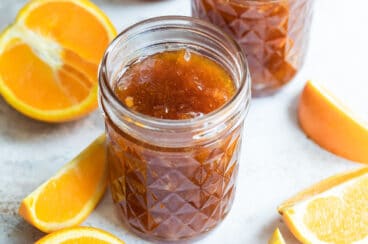This post may contain affiliate links. For more information, please see our affiliate policy.
Whether you use a zesting gadget or a common kitchen tool, learn How to Zest an Orange. With 5 ways to tackle the task, add some fresh orange flavor to cocktails, desserts, salads, and seafood.
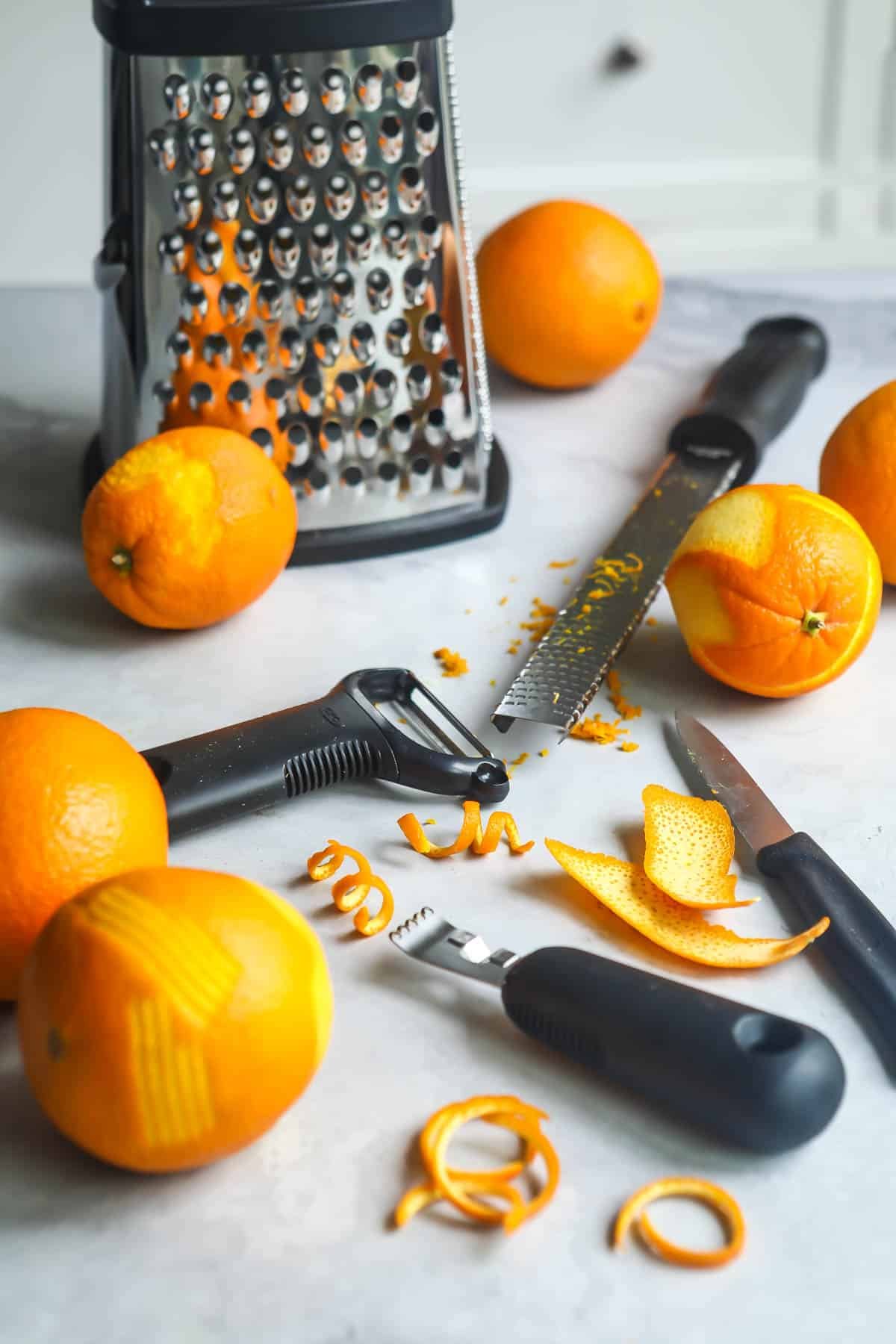
There are so many ways a little orange zest can brighten up dishes with citrus flavor. Grilled meats and poultry, fresh salsas, salad dressings, soups, desserts, and cocktails – the list goes on, and you can use orange zest in all of them!
There are plenty of gadgets to help you zest with the rest, but chances are you already have at least one tool lying around that will get the job done. Fresh orange zest freezes really well, too, so you don’t have to use it all right away. And, I have plenty of ideas to put your orange juice to work in case you have extra.
Table of Contents
Ingredient notes
- Oranges: Always begin by washing and drying your oranges. No matter what technique you use, don’t dig in too deep to the bitter pith or the juicy fruit. Use a light touch, and make sure you rotate the fruit so you don’t over zest.
Do you need a zester?
There are different kinds of zest and different ways to generate them. It’s helpful to see what equipment gets the job done while considering what you may already have on hand. Before adding another tool to the drawer, consider the type of zest you need:
- Small, thin shreds: Stir into baked or salad dressings or sprinkle over roasted vegetables. Look for a rasp-style grater like a Microplane or box grater.
- Long, thin strips: Form into twists as a garnish for cocktails or decorations on cakes. A channel knife is the easiest way, but you can also trim down and thinly slice peel from a vegetable peeler or paring knife.
- Flat, wide strips: Add to cocktails as a garnish, dry and add to cups of tea, or slice into thin strips to make twists. Make these with a vegetable peeler or paring knife.
For even more information on which zesting tools to buy, if any, see my post on The Best Zesters.
Step-by-step instructions
1. To zest an orange with a microplane:
- Hold the grater in your non-dominant hand and the orange in the other over a cutting board or clean flat surface. Going in one direction, push the orange away from you across the rough side of the grater, removing the colorful part of the fruit, and exposing the pith. Gently rotate the orange as you go to get all of the zest you can from each fruit. Scrape any excess orange rind from the underside of the grater.
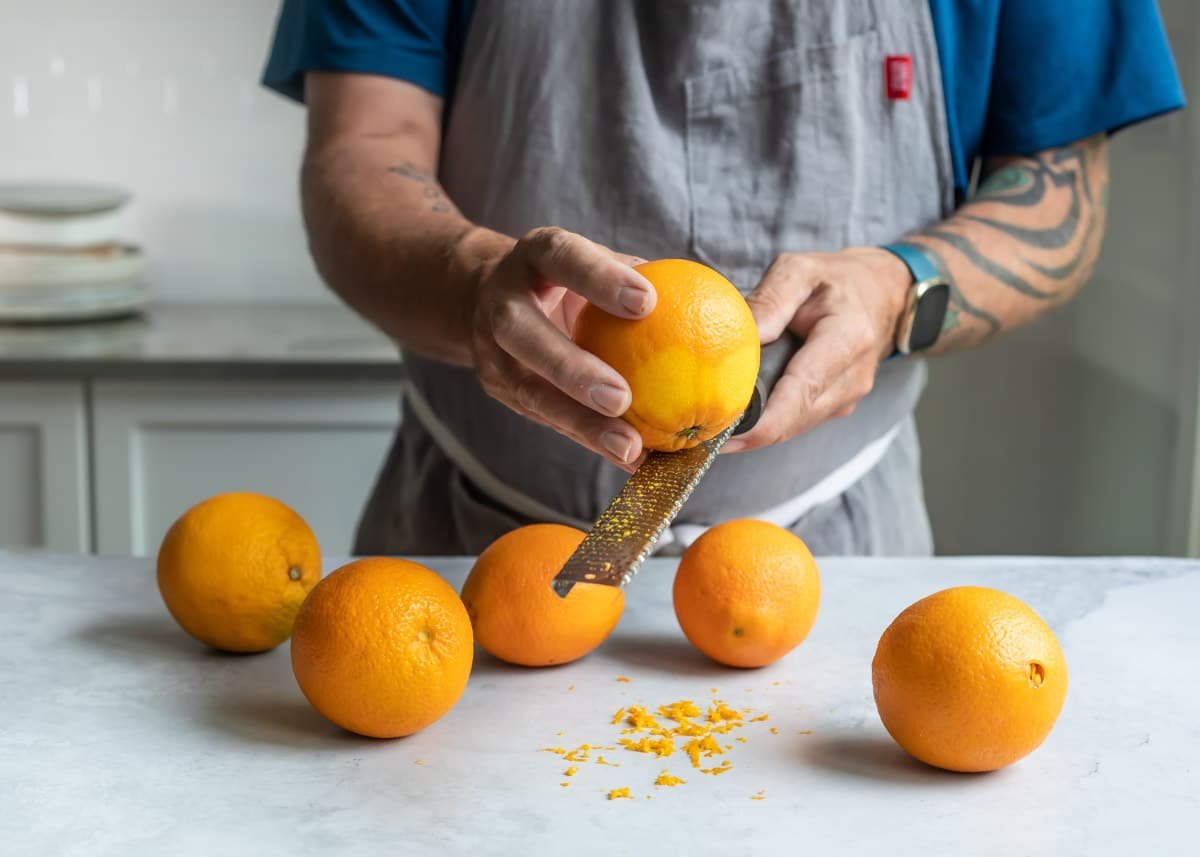
2. To zest an orange with a vegetable peeler:
- Hold the orange in one hand and the peeler in the other. Beginning at the top of the fruit and working your way around the orange, use the peeler to cut into the skin and carefully remove the peel in thick, wide strips. Use light pressure to avoid going so deep as to remove the white pith which has a bitter taste.
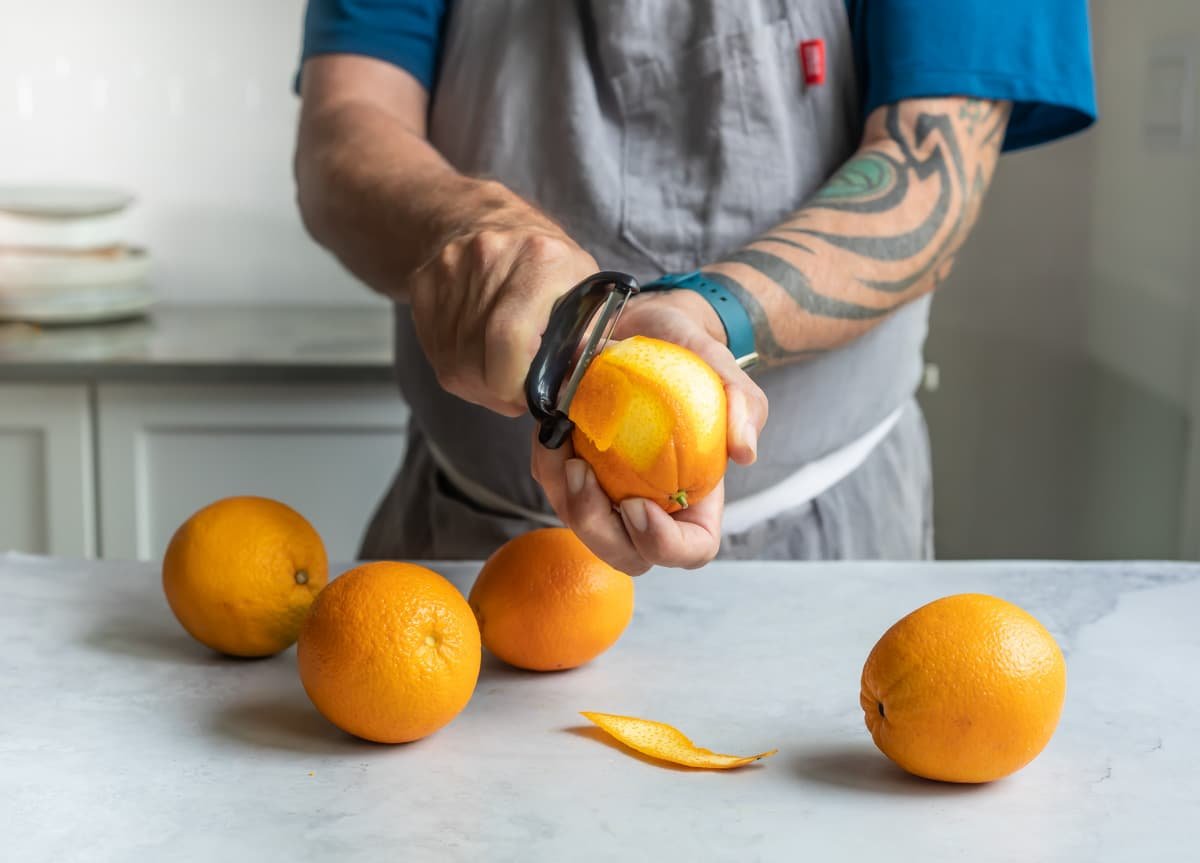
3. To zest an orange with a paring knife:
- Hold the orange in one hand and the knife in the other. Beginning at the top of the fruit, cut into the skin and carefully remove the peel in strips, working your way around the orange. Avoid going so deep as to remove the white pith.
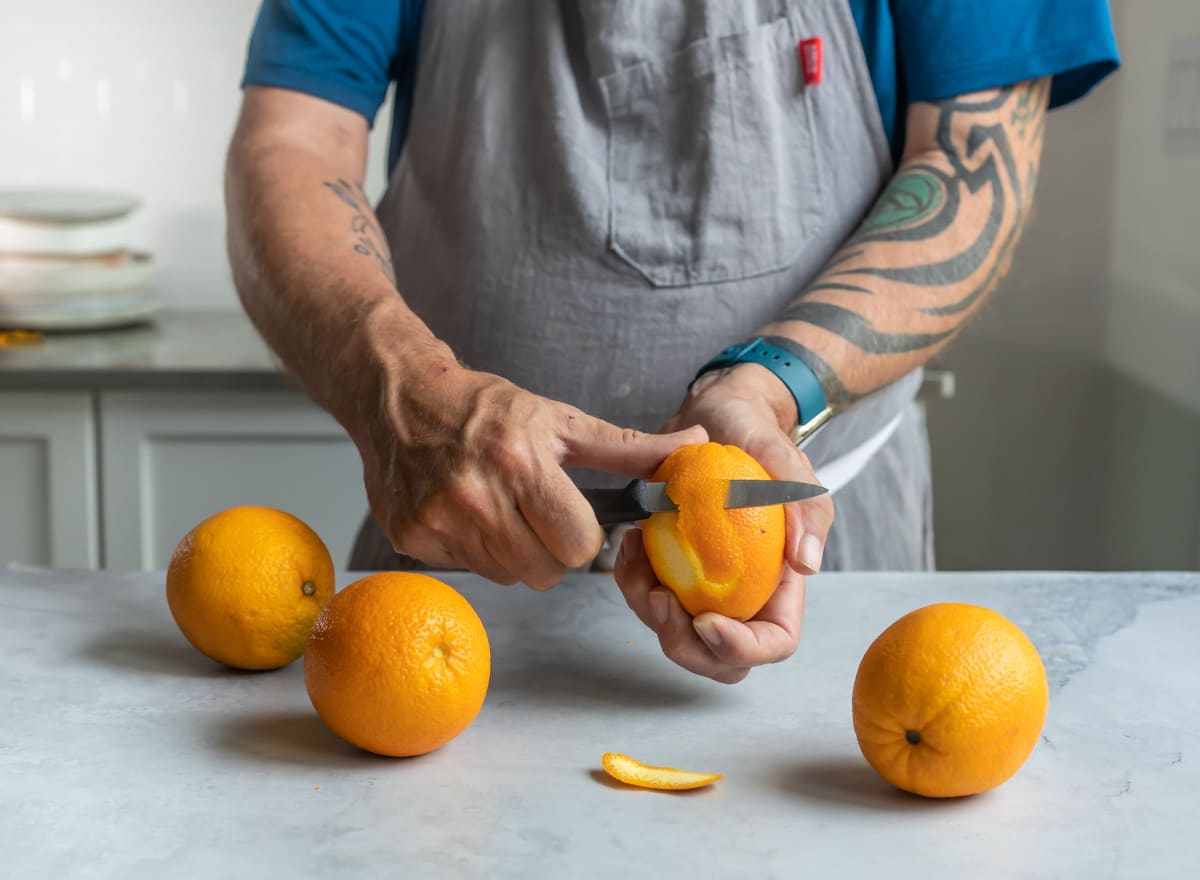
4. To zest an orange with a box grater:
- Place the cheese grater over a cutting board or clean work surface. Holding the box grater by the handle firmly with one hand, and the orange in the other, push the orange away from you across the rough side of the grater, removing the colorful part of the fruit, and exposing the pith. Gently rotate the orange as you go, to get all of the zest you can from each fruit. You can cut these wide strips into thin strips or smaller pieces as needed.
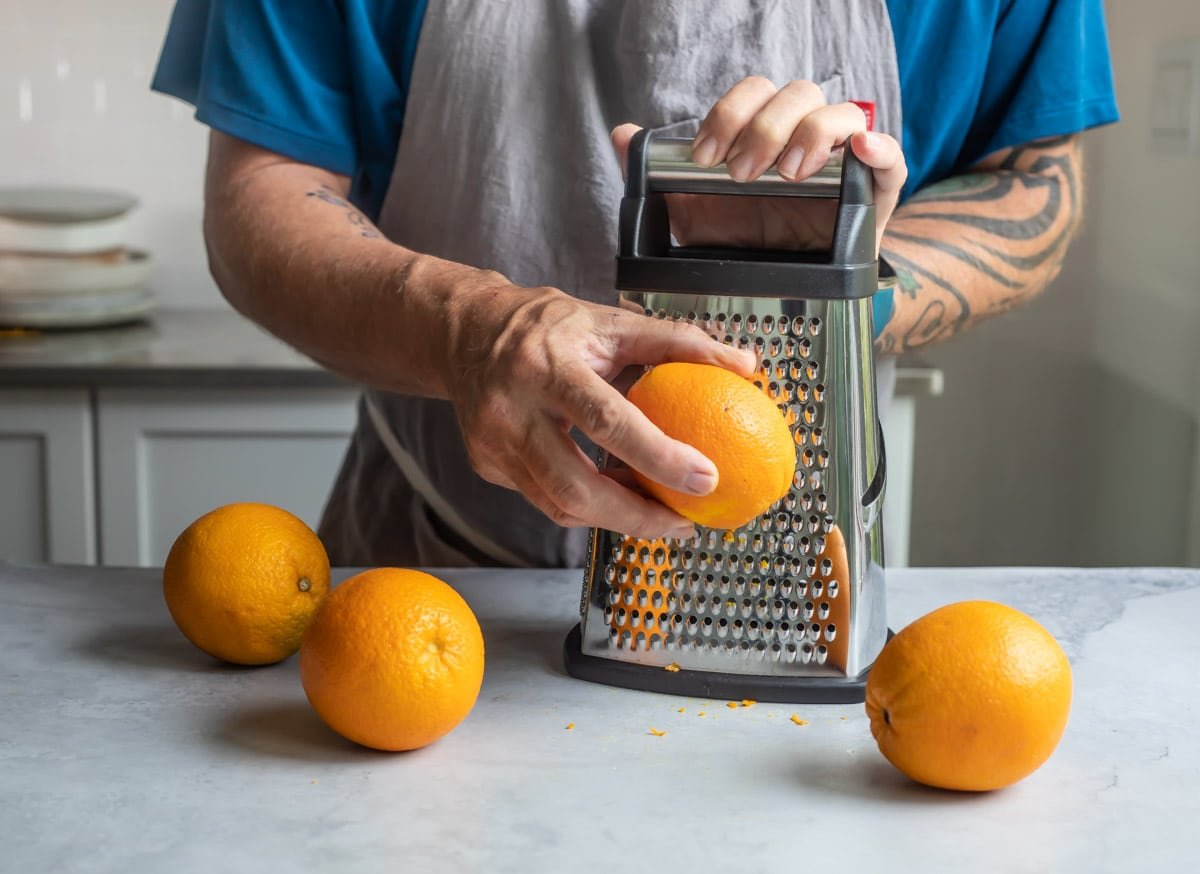
5. To zest an orange with a zesting channel knife:
- To make zest, hold the orange in one hand and the zester in the other. Starting at the top of the orange, press the round blades into the skin and move them across the fruit, rotating so that you get all of the zest you can.
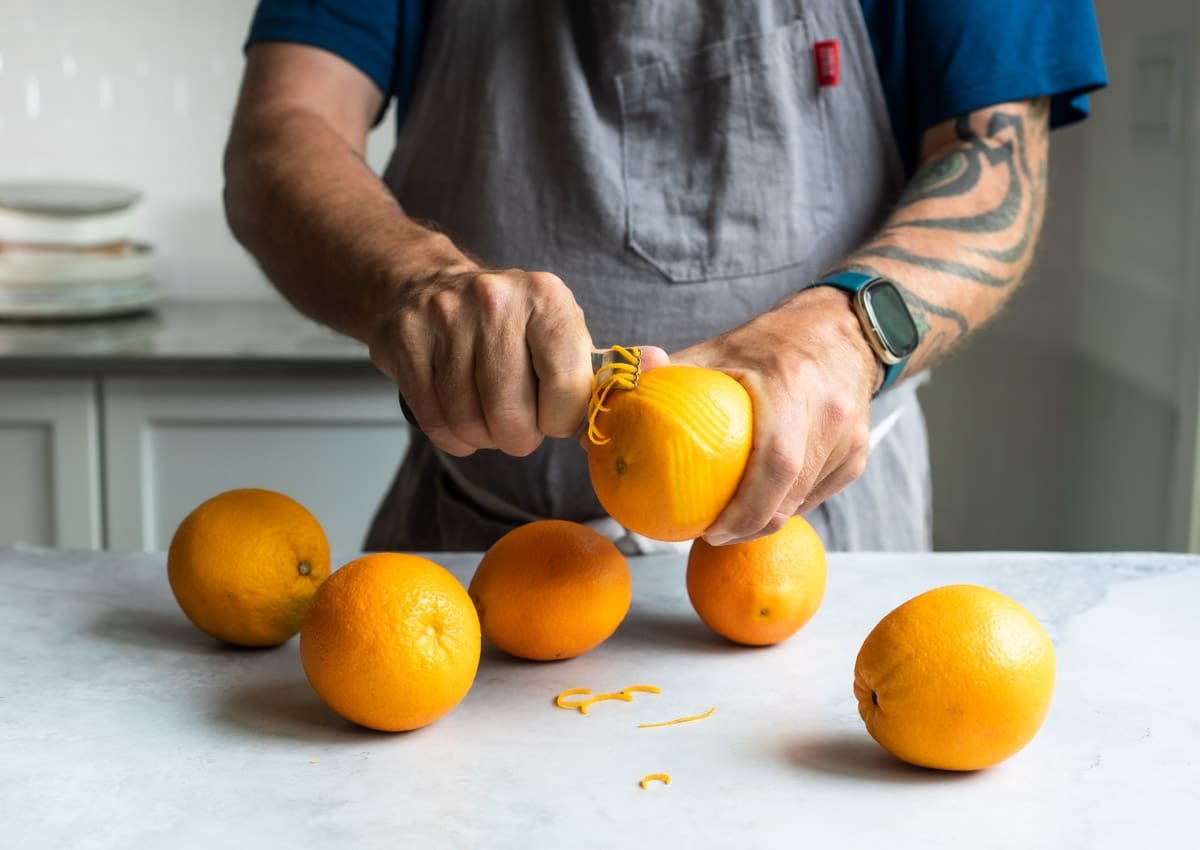
- To use a channel knife for garnishes, hold the orange in one hand and the channel knife in the other. Dig the tip of the channel-shaped blade into the orange at the middle, and rotate the orange so that you make one long, narrow peel.
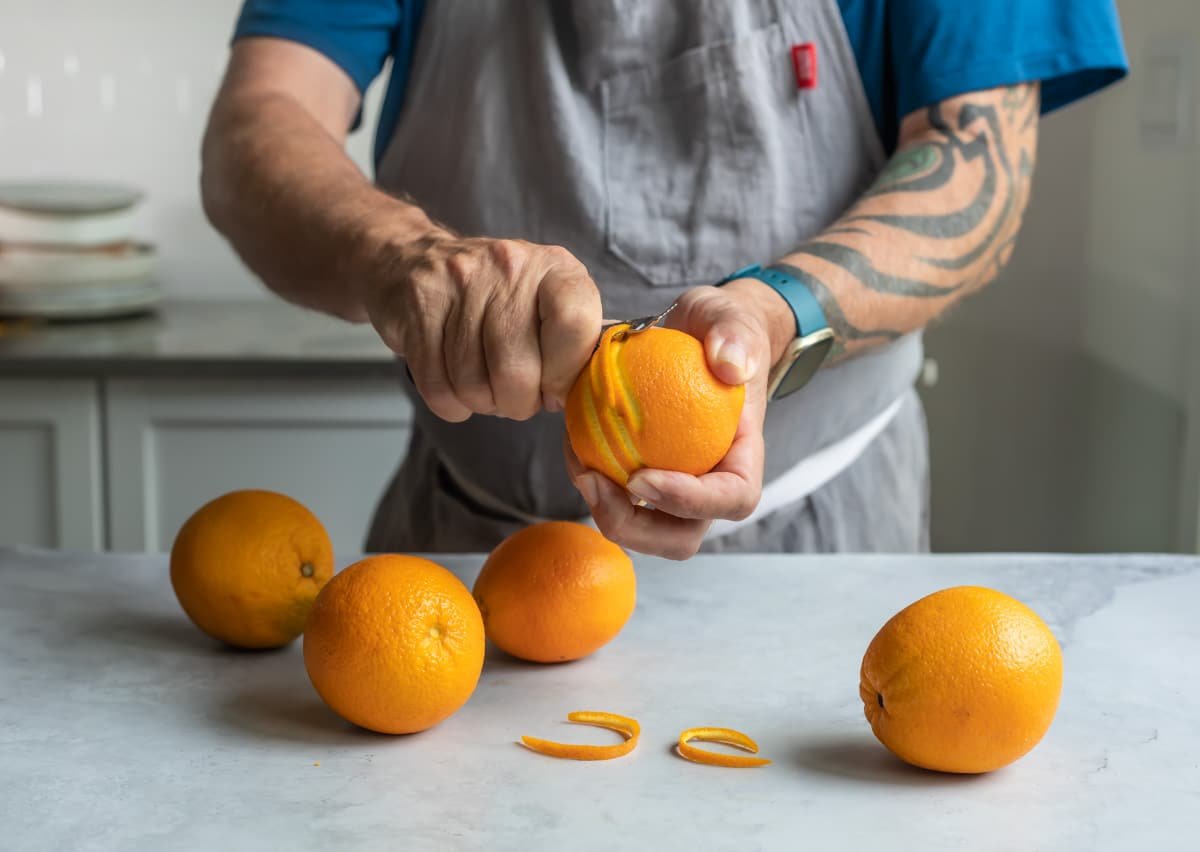
To make an orange twist:
- Gently rotate a long strip of orange peel around a drinking straw, securing each end with pins to hold it in place. This can be done in advance; by the time your cocktail is ready, your twist will be beautiful and perfectly curled. Just remember to give it an extra twist over the drink, to release the natural oils over the surface of the cocktail.
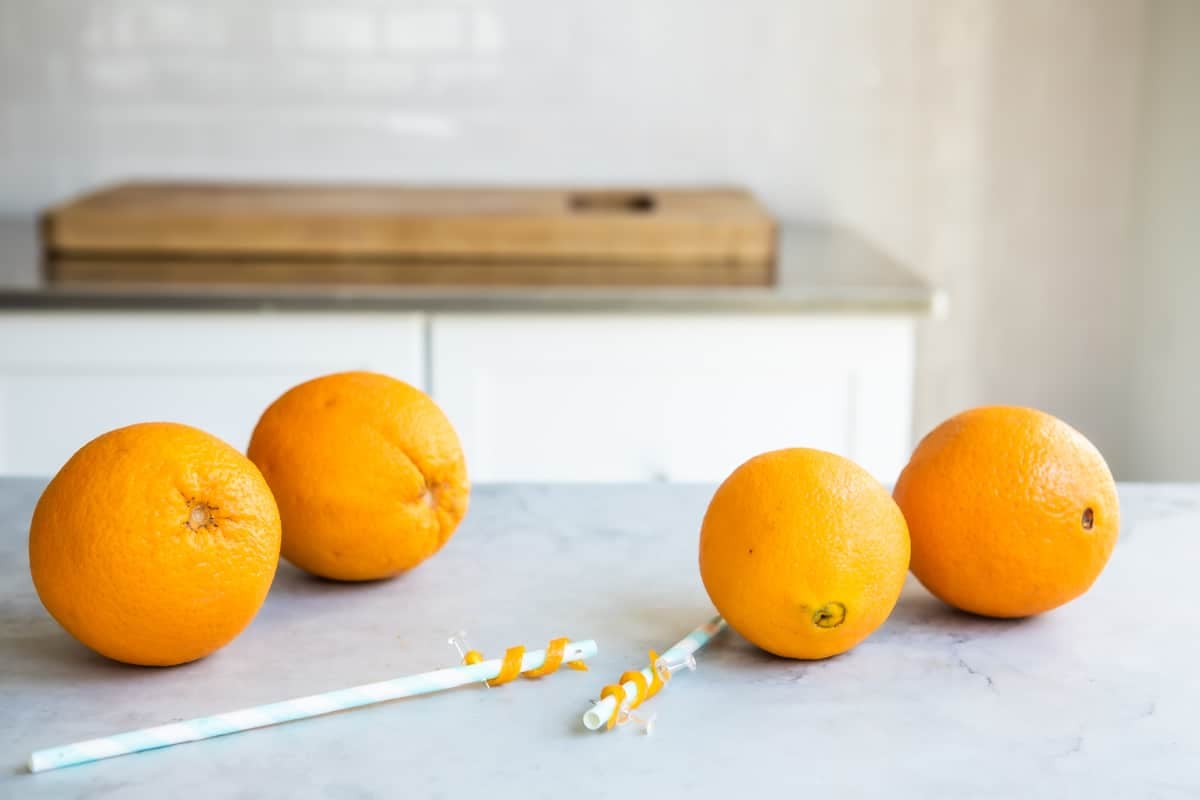
Recipe tips and variations
- Yield: 1 large orange will yield about 2 tablespoons of zest.
- Storage: Store leftover orange zest in an airtight container or plastic bag in the refrigerator for up to 4 days.
- Freezer: Add orange zest to a freezer-safe container, label, date, and freeze up to 6 months.
- Zest before juice: When a recipe calls for both juice and zest, always zest before you squeeze because it’s much easier to hold and rotate a whole orange.
- Lemon Zest and Lime Zest: Follow all the same procedures to zest lemons and limes.
- Margarita Salt: Citrus zest is delicious stirred into homemade Margarita Salt.
- Orange butter: Stir orange zest (and maybe garlic and fresh thyme?) into softened butter for a delicious orange Compound Butter for Pan-Fried Tilapia, Baked Salmon, and Grilled New York Strip.
- Oranges desserts: Fresh orange zest is delicious in homemade sweets like cake, cookies, and muffins. Orange zest is the perfect garnish for a moist Orange Cake.
- Cranberry sauce: Orange juice and orange zest add a welcome flavor to any cranberry sauce, homemade or store-bought.
- Leftover orange juice: If your recipe doesn’t call for orange juice, squeeze those oranges anyway! If needed, freeze fresh orange juice until you’re ready to use it. Then, make
- Happy Hour: Add a piece of orange peel or twist to cocktails like a Sidecar Cocktail (shown below).

Frequently Asked Questions
1 large orange will yield about 2 tablespoons of grated orange zest.
If you don’t have fresh oranges to zest on hand, orange extract will deliver a similar flavor.
Citrus fruit is covered with a peel. The outer skin layer is called a flavedo. It has all the flavor, thanks to the natural citrus oils that are located just under the surface. That peel includes the inner skin layer, called an albedo, which many refer to as “pith.” Avoid the bitter white pith.
The difference between orange zest and orange peel is that zest is purely made of the very outermost layer of the citrus fruit: all flavedo (flavor) and no bitterness. Not all citrus fruits have the same ratio of pith to skin, however. For example, grapefruit tends to have thick skin with a lot of protective pith, while limes have almost no pith at all. This is an important distinction when you start zesting different fruits.
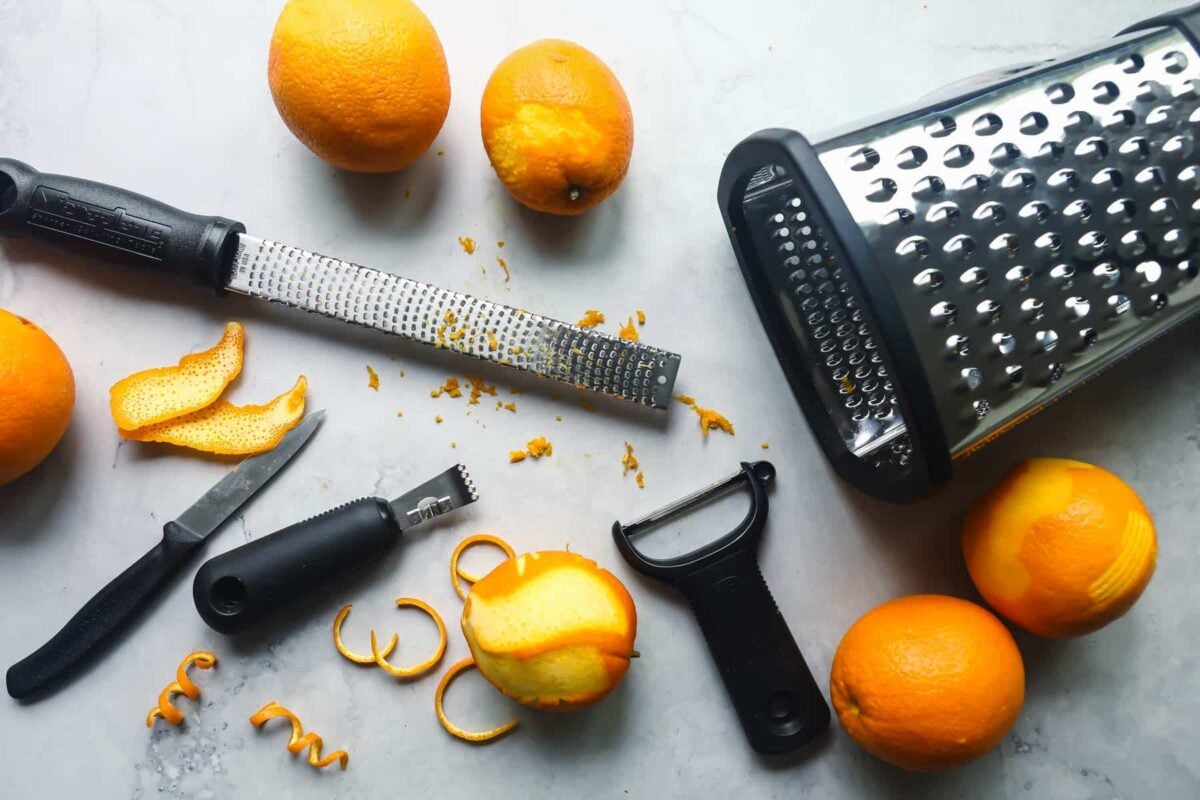
More recipes with oranges
Side Dish Recipes
Citrus Salad
Stock, Sauce, and Spread Recipes
Orange Marmalade
Drink Recipes
Fruit Punch
Cocktail Recipes
Mimosa Bar
Join Us
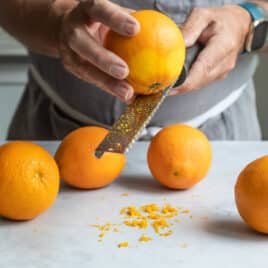
How to Zest an Orange
Equipment
- Microplane grater (My favorite! Use this for zest, cheese, nutmeg, garlic, and chocolate)
- Vegetable peeler (My go-to peeler for thick strips of zest and for peeling potatoes or any vegetable)
- Paring knife (A super-sharp paring knife is a kitchen staple that works great for zesting citrus)
- Box grater (Use the fine-grater side for citrus and try the coarse and medium grates or slicing side for vegetables, herbs, and cheese)
- Channel knife (This 2-in-1 tool zests or makes strips for citrus garnishes)
Ingredients
- 1 orange (see note 1)
Instructions
To zest an orange with a microplane:
- Hold the grater in one hand and the orange in the other over a cutting board or clean work surface. Going in one direction, push the orange away from you across the rough side of the grater, removing the colorful part of the fruit, exposing the pith. Gently rotate the orange as you go to get all of the zest you can from each fruit.
To zest an orange with a vegetable peeler:
- Hold the orange in one hand and the peeler in the other. Beginning at the top of the fruit and working your way around the orange, use the peeler to cut into the skin and carefully remove the peel in thick, wide strips. Avoid going so deep as to remove the white pith.
To zest an orange with a paring knife:
- Hold the orange in one hand and the knife in the other. Beginning at the top of the fruit, cut into the skin and carefully remove the peel in strips, working your way around the orange. Avoid going so deep as to remove the white pith.
To zest an orange with a box grater:
- Place the grater over a cutting board or clean work surface. Holding the box grater by the handle firmly with one hand, and the orange in the other, push the orange away from you across the rough side of the grater, removing the colorful part of the fruit, exposing the pith. Gently rotate the orange as you go, to get all of the zest you can from each fruit.
To zest an orange with a zesting channel knife:
- To make zest, hold the orange in one hand and the zester in the other. Starting at the top of the orange, press the round blades into the skin and move them across the fruit, rotating so that you get all of the zest you can.
- To use a channel knife for garnishes, hold the orange in one hand and the channel knife in the other. Dig the tip of the channel-shaped blade into the orange at the middle, and rotate the orange so that you make one long, narrow peel.
To make an orange twist:
- Gently rotate a long strip of orange peel around a drinking straw, securing each end with pins to hold it in place. This can be done in advance; by the time your cocktail is ready, your twist will be beautiful and perfectly curled. Just remember to give it an extra twist over the drink, to release the natural oils over the surface of the cocktail.
Notes
- Oranges: Always begin by washing and drying your oranges. No matter what technique you use, don’t dig in too deep to the bitter pith or the juicy fruit. Use a light touch, and make sure you rotate the fruit so you don’t over grate.
- Yield: 1 large orange will yield about 2 tablespoons grated orange zest.
- Storage: Store leftover orange zest covered in the refrigerator for up to 4 days.
Nutrition
Meggan Hill is a classically-trained chef and professional writer. Her meticulously-tested recipes and detailed tutorials bring confidence and success to home cooks everywhere. Meggan has been featured on NPR, HuffPost, FoxNews, LA Times, and more.

